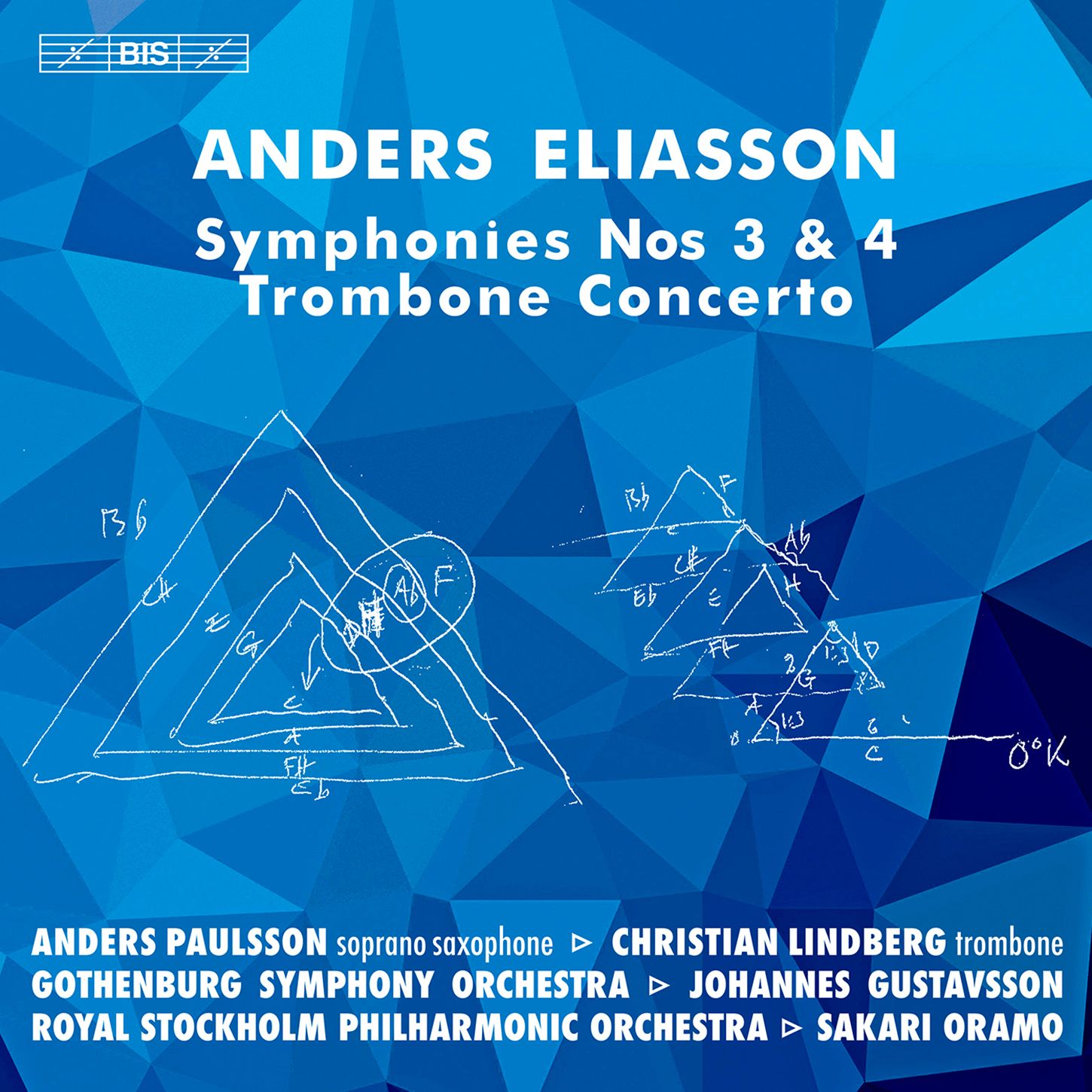REPOST Music is like H20: Eliasson Symphonies & Trombone Concerto on BIS
A superb introduction to the music of Anders Elisasson. This is profound, often beautiful, music

Swedish composer Anders Erik Berger Eliasson (1947-2013) has a markedly personal mode of expression. Born in Borlänge (in the south Swedish province of Dalecarlia), he travelled to Stockholm aged 16 to study provately and thereafter at the Royal College of Music there. Enrolling in 1966, he learned all the latest trends: twelve-tone composition, modernism, musique concrète. And yet he found it hard to move away from teh weight fo the tradition that preceded the twentieth-century. As he put it:
Music is like H2O: melody, harmony and rhythm are a single entity. Melody + harmony = rhythm!
There are some lovely line drawings reproduced on BIS' card slipcase, one that demonstrates the H2O concept and another that shows how his music is based on fifths, but not arranged in the traditional circles. Instead, Eliasson arranges them in a sequence of triangles.
This sense of cohesion is certainly present in his music. We can hear this in the Thrid Symphony for soprano saxophone and orchestra. It originally carried the original subtitle "sinfonia concertante"; it has also been characterised in the present booklet notes as a "five-act drama of extreme contrasts". It was originally written for alto saxophonist John -Edward Kelly; in 2010, Eliasson made a version for soprano sax, which apparently affronted Kelly. The superb soloist here is Anders Paulsson.
There is a complexity to the Symphony No. 3 (1989/2010) for soprano saxophone and orchestra, though, as one can hear from the third movement:
Worth listening to that third movement all the way through for it climaxes at the end in the most remarkable way: a feeling of arrival, and triumph, surmounted by a soprano saxophone squeal. All the more remarkable, then, is the field of calm that opens the beautiful fourth movement, simply called "Lugubre" (the entry of the sax is ultra-beautiful, and stuningly prepared by Eliasson):
The Trombone Concerto (2000) was writtten for and dedicated to the great trombonist Christian Lindberg, who plays it here. It opens with an Adagio - a perhaps surprisingly lyrical movement to start with, full of beautiful melodies. The Royal Stockholm Philharmonic Orchestra is on fine form. Listen to Lindberg's expressivity, perhaps especially around he 11-12 minute mark:
The concerto appears as one track (and so is complete above, but is divided into a tripartite structure of slow-fast-slow (Adagio - Allegro moderato - Lento, cantabile). There is considerable trombone virtuosity in the fast, scudding dark clouds of the Allegro moderato, but it is perhaps in the transition to the final Lento cantabile that pure beauty is found again. Perhaps this is an Eliasson trait - shifting states (fast to slow and so forth) inspired him the most?.
The performance of the Thrid Symphony is condicted by a name new to me: Johannes Gustavsson, who marshals his forces brilliantly. The remainder of the disc is conducted by Sakari Oramo, a conductor well known to UK audiences through his work with the BBC.
Interestingly, although we move from concerto to the Fourth Symphony, there is a timbral link to the Trombone Concerto via Eliasson's inclusion of flugelhorn solos in his Fourth Symphony. Written some 16 years after the Third Symphony, the Fourth was commissioned by Munich's Musica Viva series (we've featured some of the Musica Viva series before on Classical Explorer) and by the Gothenburg Symphony Orchestra. This is, deservedly, not a one-performance work: conductors such as Sakari Oramo, Andrew Manze and John Storgårds have performed it, in addition to the conductor at the November 2007 premiere, Mario Venzago.
A simply gesture of a move of a whole-tone dominates the work, which is clearly cogently argies as well as grittily present. Try the first movement (where, at the beginning, you can hear that motif):
The climax of the symphony's first section is awesome in the literal sense: keening, almost desperate gestures vie with percussion and swirling strings. The Adagio (from bar 414 - the sections are tracked by BIS) features that flugelhorn solo, floating miraculously in space (the flugelhorn player is the superb Joakim Agnas):
The pervasive, plintive sound of the flugelhorn is haunting on a soul level; for those of us brought up in a North England brass band tradition, perhaps, it has exatr layers of resonance. There is also an almost Mahlerian sense of space to this.
The symphony's proportions are ever-reducing: 11"49; 7"43; 5"14; 1"59. The third section reminds me of the music of Hans Werner Henze in his most ghostly, elusive, mercurial mode, and the Stockholm orchestra injects the music with an appropriate sense of underlying urgency. It is marked "Con moto, minaccioso" - with movement, menacingly, and the Stockholm musicians shine in their virtuosity:
It is the haunting end of the work that hangs in the air long afterwards (and BIS add a goodly amount of silence at the end of the track):
A superb introduction to the music of Anders Elisasson. This is profound, often beautiful, music.
Eliasson Amazon Purchase Link